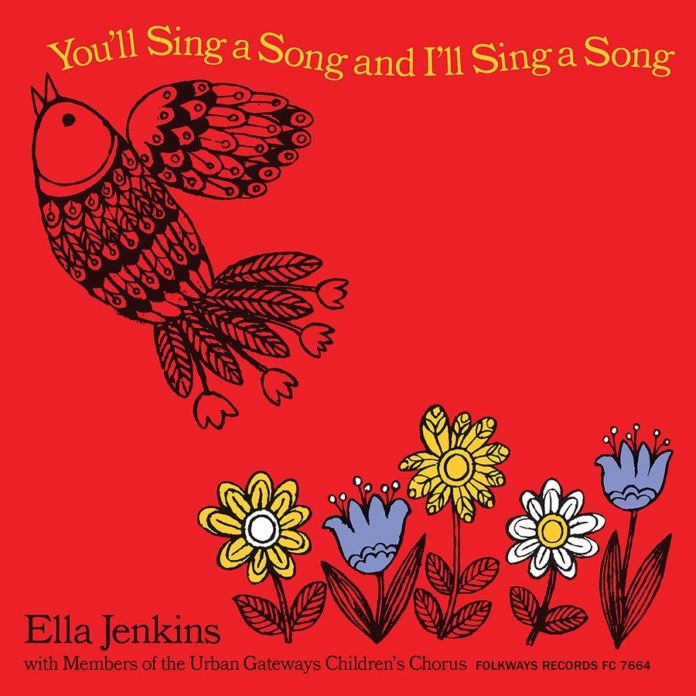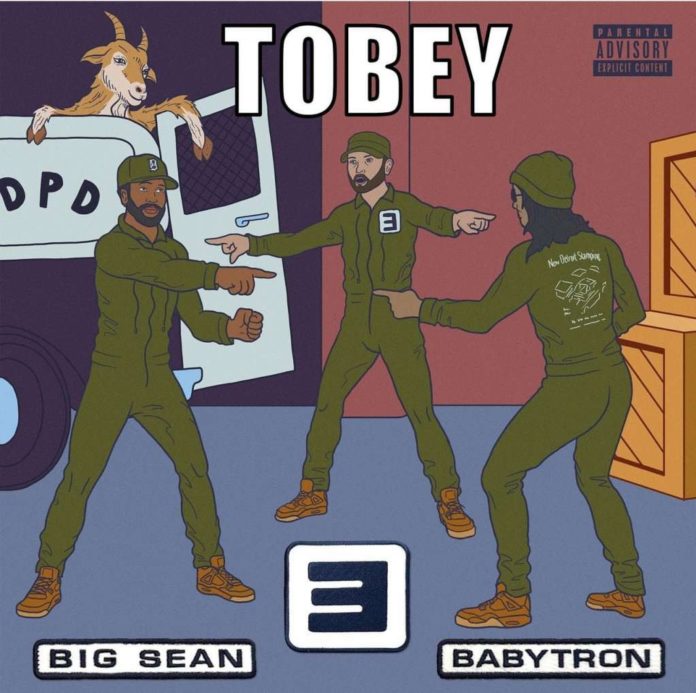Ella Jenkins was born on August 6th, 1924 in St. Louis, Missouri, and will have her 100th birthday later this year. To honor her centennial, Smithsonian Folkways is planning reissues, tributes, and archival releases to celebrate her legacy as the “First lady of children’s music.” One of the most iconic folk musicians of the 20th century, in general, Ella pioneered the call-and-response, “first me and now you” style of singing that’s become a staple of children’s music and early childhood education overall. Across her 39-album discography (spanning 1957 to 2017), which included works of African-American heritage songs, Jewish songs, and union songs for children, she also devoted herself to championing multiculturalism and fostering a spirit of understanding and inclusivity through song. She earned a GRAMMY Lifetime Achievement Award in 2004, and through her music and appearances on programs such as Sesame Street, Barney and Friendsand Mister Rogers’ Neighborhood, has taught, inspired, and touched generations.
The two reissues chosen by Folkways – You’ll Sing a Song and I’ll Sing a Song, first released in 1966, and A Long Time to Freedom, first released in 1969 – together represent the diversity of Ella’s engagement with communities of all types and ages through music. In addition, her entire in-print discography is now available for the first time on Smithsonian Folkways’ Bandcamp page.
Both have been remastered from the original tapes and will be on vinyl for the first time in decades (35 years and 55 years, respectively) this July 26th. Created especially for young listeners, You’ll Sing a Song and I’ll Sing a Songis as much a classic of American folk music as it is a foundational record for those making music for young people. It introduces children to the basic musical building blocks and, through its participatory framework, encourages listeners to follow their imaginations and pursue their individual creativities. The title track was added to the National Recording Registry at the Library of Congress in 2007. A Long Time to Freedom is an album made for all ages but geared toward adult listeners, and reflects Ella’s active role in the ongoing struggle for Black liberation in mid-century America through its focus on Black music traditions and songs from Ella’s youth.
After Ella was born in 1924, she was raised in the South Side of Chicago after her parents moved to the city during the Great Migration of the early 1900s. From the 1920s on into the 1940s, her Chicago neighborhood was rich with live music—singing games, rhymes and rhythms, blues, blues-flavored folk songs, and the spirituals and gospel music of the local churches. Ella was surrounded with song from her earliest years, and she grew up under the influence of her “Uncle Flood,” who played blues harmonica and introduced her to the music of T-Bone Walker, Memphis Slim, and Big Bill Broonzy. She also heard live the music of Cab Calloway and Count Basie, who played at The Regal Theater, an important music venue in Chicago’s Bronzeville neighborhood.
Through her youth and beyond, Ella was always singing. She studied sociology, child psychology, and recreation as a student at San Francisco State University, and was drawn to the music of her own and other cultures. As a program director for teens at the YMCA in the early 1950s, she learned songs from Spanish-speaking friends, and came across music in Hebrew, Arabic and French, as well as songs from India and the African continent. She wrote her own songs, too, and played harmonic, guitar, and ukulele. For her musical talents, she was soon invited to host the Chicago public television show for children called “This is Rhythm.”
After she got the TV gig and gained a local following, she began her touring career by performing for school assemblies across the nation. She loved the children and had the magic touch for inspiring their engagement in song and rhythm. Soon, word spread about her straightforward directions for participatory musical experiences – her call-and-response style.
Before she ever met Folkways founder Moses Asch, she developed her children’s musical repertoire and skill at the same time as she expanded her cultural horizons when it came to music of other communities and groups. Together, Ella and Asch released her first album in 1957: Call-and-Response: Rhythmic Group Singing—a collection of eight chants created by Jenkins and inspired by West African traditions featuring conga drums, wood blocks, and other instruments typical of school classrooms. She would go on to record 40 albums for Folkways and then Smithsonian Folkways, ranging from albums of nursery rhymes, bilingual songs, and African American folk songs, to nine recordings that pay tribute to “rhythm”—non-pitched rhythmic chants, rhythmic movement, and the rhythm instruments of classroom use. She even collaborated with some of Folkways’ other major artists, including Pete Seeger.
Many of her songs seeped into standard school songbooks, and thus public consciousness, like “You’ll Sing a Song and I’ll Sing a Song” and “Did You Feed My Cow?” Ella also popularized African American heritage songs like “I’m On My Way to Canaan Land,” “Hambone,” “This Train,” and “He’s Got the Whole World in His Hands.”
Her commitment to working with and inspiring children has stayed steadfast through her many-decades career and life. Ella’s legacy is her music – besides her GRAMMY and TV appearances, her recordings have received numerous awards from the likes of Parents’ Choice and ASCAP, and fans have included her fellow Chicagoan Michelle Obama. In recent years, a new childrens’ book series called Ella Jenkins Meets has told the stories of Ella traveling to DC to meet the likes of Michelle, Barack Obama, and Kamala Harris, attend Black Lives Matter rallies, and more.
Through the rest of 2024, Smithsonian Folkways will continue to honor Ella’s life and career with musical tributes, the release of archival footage and photos, and more.













